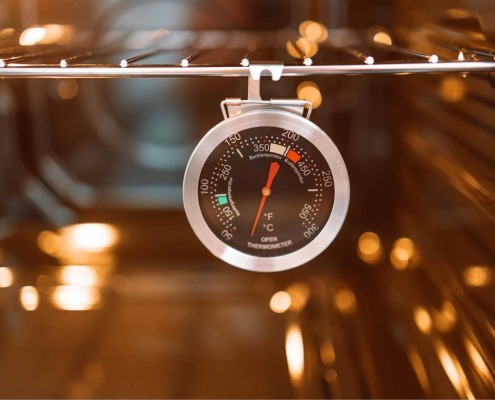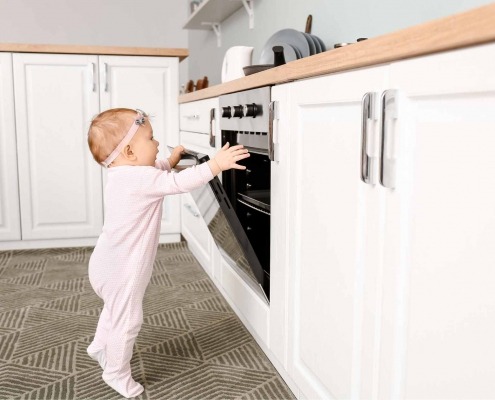Test these 3 parts to find out why your electric GE range surface elements won’t heat
Steven E / Tuesday June 25, 2024
Is your GE range refusing to heat up, leaving your culinary plans on hold? Don’t worry, we’ve got you covered with simple, step-by-step troubleshooting tips to solve this frustrating problem. To make the process even easier, check out our how-to video below and get your kitchen back in action in no time!
Looking for the right part? Enter your appliance model number below to find the exact match and get your appliance running like new again!
If your electric GE range surface elements aren’t heating, you can run a few tests yourself to find out what’s going wrong and order the correct replacement part. Just follow the steps in this guide to get your range back up and running.
If you find out that you need any replacement parts for your GE range while you’re troubleshooting, you can enter your model number at AppliancePartsPros.com to order them. Most orders arrive in just two business days, and we have thousands of free guides to show you how to install your new parts.
Watch the full troubleshooting process here!
What you need
- Multimeter
- Phillips head screwdriver
- Wire stripper
- Electrical tape
Important: The specific tools required may vary depending on the model of your appliance and the type of fasteners used on it. Always consult the user manual or refer to any specific instructions provided by the manufacturer for the recommended tools for your appliance model.
Read more: Electric Range Heating Coil Cleaning & Upkeep
Safety precautions
When working on any appliance, remember to keep safety first. Here are some tips to keep in mind:
- Always power off and unplug your appliance or switch off the circuit breaker before you attempt any maintenance or replacement work. This keeps you safe by eliminating any risk of electric shock.
- If the appliance has recently been used, give it plenty of time to cool down before working on it.
- Take your time while working to prevent accidents and personal injuries. Rushing is the enemy of precision.
- Work in a well-lit area so you can see and access appliance parts.
- Keep your workspace free of clutter and other obstacles. Keep children and pets away from the work area.
- Never work on internal parts with wet hands. Make sure the work area is completely dry.
- Check the user manual to see if there are specific installation or safety instructions related to your appliance or replacement part.
- Be gentle when handling or removing parts. Excessive force might damage the appliance or cause personal injury.
- Wear insulated work gloves to protect your hands from sharp metal parts and debris.
- When working with wires, avoid touching any exposed wires or terminals. If you need to touch a wire, use a non-conductive tool or wear insulating gloves to prevent electrical shock.
- Always take photos or make a note of wiring terminals or other connections before disconnecting them to make reassembly easier.
- Don’t test live voltage with a multimeter if you’re unfamiliar with how to prevent short-circuiting.
Read more: Range Burner Receptacle Replacement: A Step-by-Step Guide
How to test the range
Here are 3 reasons why your GE range surface elements won’t heat up and how you can diagnose the specific problem.
Step 1: Test the element receptacle
- Unplug the range from the power outlet.
- Remove the surface element and drip pan to access the element receptacle.
- Use a Phillips head screwdriver to remove the single screw that holds the receptacle in place.
- Inspect the inside of the receptacle for any burned or pitted marks, which would indicate that the receptacle needs to be replaced.
- Check the wiring connected to the receptacle for any burn marks.
If the receptacle or wiring shows any signs of damage, you’ll need to replace them.
IMPORTANT: If you need to replace the receptacle or wiring, replace the surface element at the same time since the damaged receptacle likely also affected the element.
If the receptacle and wiring look good, move on to the next step.
Step 2: Test the surface element switch
LIVE VOLTAGE WARNING: For this test, the range needs to be plugged in and powered on. Please be very careful to protect yourself from electric shock, which has the potential to cause serious injuries. Don’t ever test live voltage if you’re uncomfortable using a multimeter.
With the power cord plugged in and the range powered on, you’re going to use a multimeter to test the voltage at the element receptacle.
- Set the multimeter to AC voltage and place one probe in one slot of the receptacle and the other probe in the other slot.
- Turn on the surface element switch.
- Check the meter reading. If you get 240VAC, then the switch is sending the proper voltage to the element.
Alternatively, you can follow the two wires from the receptacle back to the switch, turn the switch on, and measure 240VAC at the switch terminals.
If the voltage isn’t correct at the switch, either the incoming voltage to the switch is incorrect or the switch is defective. Replace the switch if it’s faulty.
If everything has checked out OK so far, continue to the next step.
Step 3: Test the surface element
- Unplug the range from the power outlet.
- Remove the surface element.
- Set your multimeter to the resistance setting (Ω).
- Use the multimeter probes to check the resistance across the two terminals of the surface element.
- Check the meter reading. You should see a resistance reading between 20-40 Ohms. If the reading is out of this range or you see a defect in the coil, then the element needs to be replaced.
Read more: 6 safety tips for using an electric range
Additional information
Thank you for reading! We hope this guide helped you get your GE range working again.
If you have any other appliance repair needs or projects, don’t hesitate to explore our other troubleshooting guides and videos.
If you need replacement parts or some extra help with ordering them, grab your model number and head over to AppliancePartsPros.com, where you can chat with a pro, check out our DIY blog and more.
Don’t forget to subscribe to us on YouTube and follow us on Facebook, Twitter and Instagram!
With nearly a decade of experience in providing top-notch customer service regarding appliance parts and repair, Steven enjoys sharing practical advice, troubleshooting tips, and interesting information to help readers stay informed.





